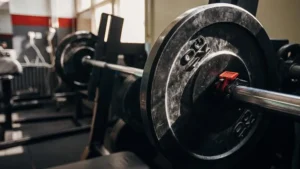
Men’s testosterone levels naturally fall with age, which can cause a number of symptoms like diminished libido, low energy, and loss of muscle mass. Many men use testosterone replacement therapy (TRT) to treat these symptoms, which can help elevate testosterone levels and reduce these symptoms. Testosterone pellets are one TRT technique that has grown in popularity in recent years. These tiny, rice-sized pellets, which are implanted beneath the skin, gradually release testosterone over a period of months. What are testosterone pellets, though, and how do they function? The fundamentals of testosterone pellets, including their advantages, how they are inserted, and what to expect from treatment, will be covered in this blog.
Everything You Want To Know About Testosterone pellets
How Do Testosterone Pellets Work?
Little, bioidentical pellets that consist of only testosterone are called testosterone pellets or testosterone implants. They are implanted under the skin, generally in the hip or buttocks, and are roughly the size of a rice grain. The pellets provide a stable and reliable amount of testosterone in the body after being injected, releasing a steady stream of the hormone over several months. This helps with hormone balancing in one’s body.
Benefits to expect from
Benefits of Testosterone Pellets
There are many advantages to using testosterone pellets. Testosterone pellets can help men with low testosterone levels manage symptoms like fatigue, decreased libido, and loss of muscular mass. Also, they help increase bone density and lower the risk of osteoporosis. Men with low testosterone levels have also been proven to benefit from testosterone pellets in terms of mood and cognitive performance.
Are Testosterone Pellets Right for You?
It is essential to know how they are going to affect your body. Inserting testosterone pellets is a reasonably easy procedure that may be completed in a doctor’s office. A local anesthetic is used to numb the area where the pellets will be placed, and a small incision is made. Following the placement of the pellets, the incision is stitched or sealed with adhesive strips. Usually, the entire procedure is quick and painless, taking around 30 minutes.
The Process of Getting Testosterone Pellet Therapy
The fact that testosterone pellets give a continuous and stable level of testosterone in the body over other TRT methods like injections or gels is one of their advantages. Due to their inconvenience and time commitment, frequent injections or gel applications are no longer necessary. Moreover, testosterone pellets provide a more constant and predictable amount of testosterone in the body by removing the peaks and troughs in testosterone levels that can happen with other types of TRT.
Risks and Side Effects of Testosterone Pellets
Despite the fact that testosterone pellets are typically secure and efficient, there may be a few dangers and adverse effects to be mindful of. They include pellet extrusion, hemorrhage, and insertion-site infection. Moreover, some men may have mood swings, a rise in acne or hair growth, and changes in their cholesterol levels. Before beginning treatment, it’s crucial to examine the advantages and disadvantages of testosterone pellets with a medical professional. However, if you take into the professional approach and take help of a specialist, the results can be great and helpful to heal faster.
Wrapping Up
For men with low testosterone levels, testosterone pellets are a secure and efficient TRT option. They maintain a stable and steady level of testosterone in the body, relieving symptoms including weariness, a decline in libido, and a loss of muscle mass. Although there are some potential hazards and adverse effects, testosterone pellets are typically well tolerated and can have a big impact on men who have low testosterone levels.






